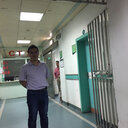[Effect of electroacupuncture stimulation of "Guanyuan" (CV 4), bilateral "Housanli" (ST 36), etc. on anti-fatigue ability and liver mitochondrial respiratory function in ageing rats with Yang-deficiency].
Atslēgvārdi
Abstrakts
OBJECTIVE
To observe the effect of electroacupuncture (EA) of "Guanyuan" (CV 4) and bilateral "Housanli" (ST 36) plus acupuncture stimulation of "Baihui" (GV 20) [an acupoint recipe for "Shuanggu Yitong" (strengthening both congenital foundation and the acquired constitution and regulating the yang-qi of the body] on the anti-fatigue ability and liver mitochondrial respiratory function in yang-deficiency ageing rats.
METHODS
A total of 48 male SD rats were equally and randomly divided into normal control, model, EA and EA control groups. The aged yang-deficiency model was established by subcutaneous injection of D-galactose (125 mg/kg, once daily for 40 days) and sequential muscular injection of hydrocortisone (1.5 mg/100 g, once daily for 7 days). For rats of the normal control group, subcutaneous injection of same dose of normal saline was gi-ven. EA stimulation (2 Hz, 1 mA) of "Guanyuan" (CV 4) and bilateral "Housanli"(ST 36) and manual acupuncture stimulation of "Baihui" (GV 20) were given to rats of the EA group. For rats of the EA control group, EA of "Zhongji"(CV 3) and bilateral "Yinlinquan"(SP 9), and manual acupuncture stimulation of "Yintang" (EX-HN 3) were given. The treatment was conducted once daily, 6 time a week and continuously for 4 weeks. Rats of the normal control and model groups were grabbed and fixed in the same way. The anti-fatigue ability was evaluated by using the time of exhausted swimming task and liver mitochondrial respiratory function was detected by Clark oxygen electrode.
RESULTS
In comparison with the normal control group, the exhausted swimming time was significantly shortened in the model group (P < 0.01). Compared with the model group, the exhausted swimming time was evidently prolonged in the EA group (P < 0.01) not in the EA control group (P > 0.05). As for the liver mitochondrial respi-ratory function, the oxygen consumption rate IV was obviously higher in the model group than in the normal control group (P < 0.01), and significantly lower in the EA group than in the model group (P < 0.01). Both liver mitochondrial respiratory control rate (RCR) and ratio of phosphorus/oxgen (P/O) were significantly lower in the model group than in the normal control group (P < 0.01), and considerably higher in the EA group than in the model group (P < 0.01, P < 0.05). Comparison between the EA and EA control groups showed that the effects of the former group were evidently superior to those of the latter group in prolonging the exhausted swimming time, lowering oxygen consumption rate IV and upregulating RCR and P/O (P < 0.05).
CONCLUSIONS
Electroacupuncture of CV 4 and ST 36 plus manual acupuncture stimulation of GV 20 can improve the anti-fatigue capability in aging rats with yang-deficiency, which may be related to its effects in reducing liver mitochondrial oxygen consumption and increasing liver mitochondrial RCR and ratio of P/O.




